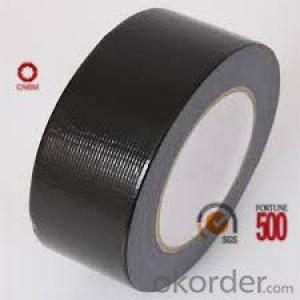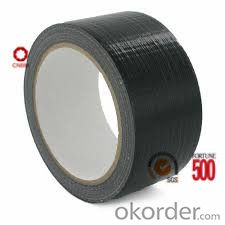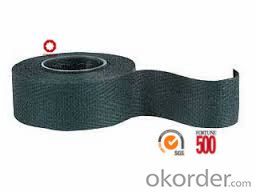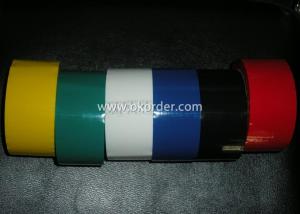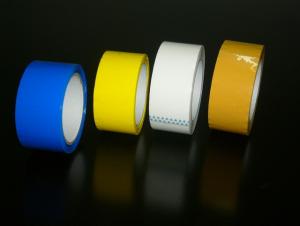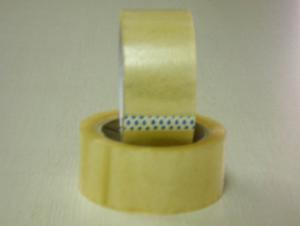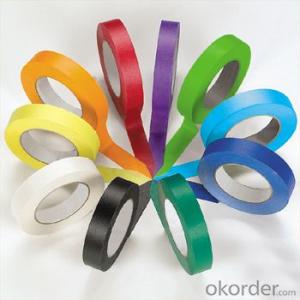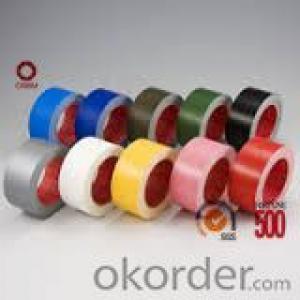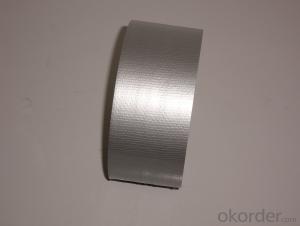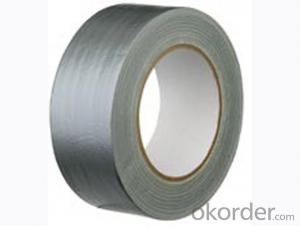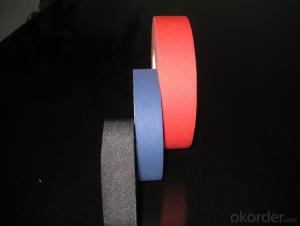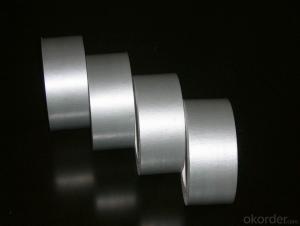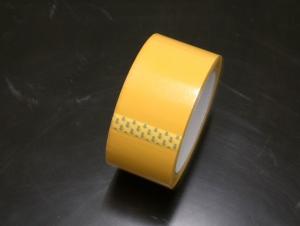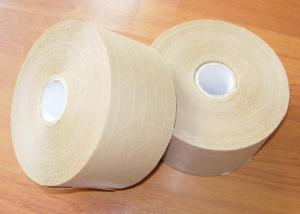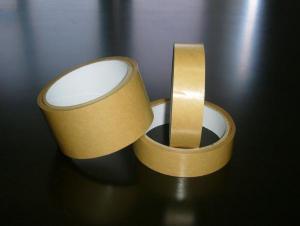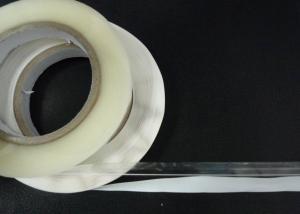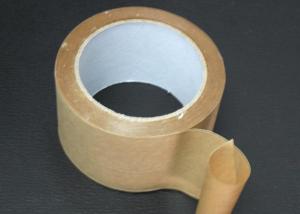Scotch Packaging Tape Heavy Duty for Pipe Wrapping Black Cloth Tape
- Loading Port:
- Shanghai
- Payment Terms:
- TT OR LC
- Min Order Qty:
- 10000 m²
- Supply Capability:
- 20000000 m²/month
OKorder Service Pledge
OKorder Financial Service
You Might Also Like
Specifications
·World Top 500 Enterprises
·Resistance to cold, heat and aging
·Best quality and competitive price
·SGS&ISO9001
Description
The Cloth Tape is of polyethylene cloth as the carrier, coating with hot melt adhesive, synthetic rubber adhesive or nature rubber. It is excellent in flame retardant, high temperature stability, and anti-aging. It provides well insulation to various products.
The thickness of the tape can be customized.
General purpose of Cloth Tape: widely used for pipe wrapping, gaffers and book binding etc.
Typical Physical Reports of Cloth Tape:
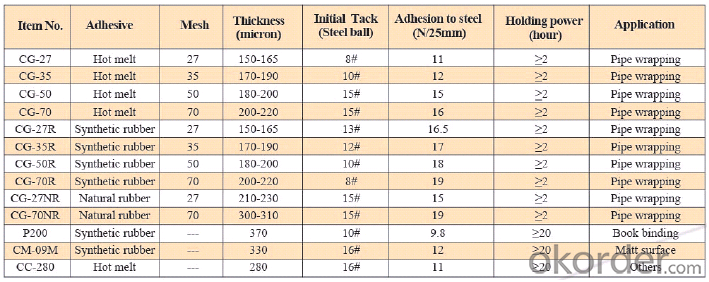
The thickness of the tape can be customized.
Log Roll: Length 1000mm; width 1060mm.
Cut Roll: As per customer’s requirements
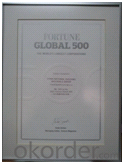
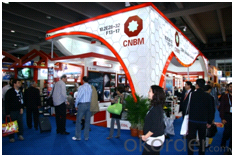
FAQ of Double Sided Tissue Tape
Q1. How about your company?
CNBM International Corporation (CNBM International) is a state-owned company and we have sound business relations with clients from over 120 countries. Currently, we have wholly-owned overseas subsidiaries and branches in 5 countries with a view to realize localization, which also represents an essential progress in our globalization target. We have over twenty years experiences.
Q2. What kind of service we can provide for you?
Sample of Cloth Tape is available.
Your inquiry will be replied within 12 hours.
24 hours service for you
Well-trained & experienced sales representative are ready to answer you.
Q3. How long can you receive the product?
Within 7-15 working days after receiving your deposit
Welcome to contact us and visit the factory!
- Q: Is packaging tape easy to tear by hand?
- Yes, packaging tape is generally easy to tear by hand.
- Q: Is packaging tape resistant to chemicals?
- Packaging tape typically exhibits resistance against a broad array of chemicals. Commonly, packaging tapes are crafted from materials like polypropylene or polyvinyl chloride (PVC), renowned for their chemical-resistant properties. These materials possess the capacity to endure exposure to different chemicals, including solvents, acids, and bases. Nevertheless, it is crucial to acknowledge that the degree of chemical resistance can vary depending on the specific type and quality of the packaging tape utilized. Certain tapes may display higher chemical resistance compared to others. Furthermore, the tape's resistance can be influenced by the duration and intensity of chemical exposure. To guarantee the tape's chemical resistance, it is advisable to review the manufacturer's specifications and guidelines concerning chemical compatibility. If you are handling exceedingly harsh chemicals or engaging in specialized applications, it may be necessary to seek out packaging tapes explicitly designed for those specific conditions.
- Q: Can packaging tape be used for sealing PVC pipes?
- No, packaging tape should not be used for sealing PVC pipes. PVC pipes require a specific type of sealant that is designed to bond with the PVC material and create a watertight seal. Packaging tape is not designed for this purpose and may not provide a secure and durable seal. It is recommended to use PVC pipe sealant or plumber's tape specifically designed for sealing PVC pipes to ensure a proper and long-lasting seal.
- Q: Can packaging tape be used for sealing packages with high-value contents?
- Indeed, packaging tape proves useful in sealing packages that contain valuable items. Designed with the specific purpose of ensuring the secure closure of packages, it offers protection against tampering, moisture, and transit-related harm. Possessing strength and durability, packaging tape usually boasts a resilient adhesive backing that guarantees a lasting seal. By employing packaging tape correctly, one can effectively safeguard packages that hold valuable contents, thereby guaranteeing their safe arrival. However, it is crucial to bear in mind supplementary security precautions, such as utilizing tamper-evident tape or incorporating additional layers of protection, depending on the worth and fragility of the items contained within.
- Q: What are the considerations for using packaging tape on corrugated cardboard boxes?
- There are several factors to consider when using packaging tape on corrugated cardboard boxes. Firstly, it is crucial to choose the appropriate type of tape for the job. Acrylic, hot melt, and natural rubber adhesive tape are all available options, each with its own strengths and weaknesses. Therefore, it is vital to select a tape that offers the necessary strength and durability to secure the cardboard boxes effectively. Moreover, the width and thickness of the tape should be taken into account. The tape's width should be sufficient to cover the box's seams and edges, ensuring a secure seal. Similarly, the tape's thickness should be suitable for the weight and contents of the box. Heavier items may require thicker tape to provide proper support and prevent damage during transportation. Another consideration is the application method. It is crucial to apply the packaging tape evenly and tightly to the cardboard boxes to prevent them from becoming loose or opening during transport. Using a tape dispenser or applicator can assist in achieving a consistent application. Additionally, the conditions under which the cardboard boxes will be handled and transported should be considered. If the boxes will be exposed to extreme temperatures, humidity, or rough handling, it might be necessary to use stronger or specialized packaging tape that can withstand these conditions. This will ensure that the tape remains intact and provides the necessary protection for the box's contents. Lastly, the removal of the packaging tape should be taken into account. If the boxes need to be opened and resealed multiple times, it might be beneficial to use a tape that offers easy and clean removal without leaving residue or damaging the cardboard surface. This will help maintain the box's integrity and make it easier to reuse or recycle the corrugated cardboard. In conclusion, when using packaging tape on corrugated cardboard boxes, it is important to consider factors such as the type, width, and thickness of the tape, as well as the application method. The conditions under which the boxes will be handled should also be taken into account, and the removal of the tape should be considered if the boxes require multiple openings. By considering these factors, one can ensure that the packaging tape provides a secure and reliable seal for the corrugated cardboard boxes.
- Q: Can packaging tape be used for sealing poly mailers?
- Indeed, poly mailers can be sealed using packaging tape. Typically, packaging tape is employed to secure diverse packaging materials, including poly mailers. This tape offers a robust and reliable seal, safeguarding the contents from spilling out or experiencing interference while in transit. Nevertheless, it is crucial to apply the tape correctly and firmly to maintain the seal's integrity. Moreover, it is advisable to opt for a top-notch packaging tape specifically designed for secure sealing to achieve optimal outcomes.
- Q: Is packaging tape safe for use on leather or fabric items?
- Packaging tape is generally not recommended for use on leather or fabric items. While it may provide a temporary solution for holding things together, it is not designed to be used on delicate materials like leather or fabric. Packaging tape is typically made of a strong adhesive that can leave residue or even damage the surface of these items. Additionally, the tape's adhesive may not be strong enough to securely hold the materials together, resulting in the tape peeling off easily and potentially causing damage to the item. It is best to use specific types of tape that are specifically designed for use on leather or fabric, such as double-sided fabric tape or leather repair tape, which provide a safer and more effective solution for repairing or securing these materials.
- Q: How does packaging tape perform in high-temperature conditions?
- Packaging tape generally performs well in high-temperature conditions, but its effectiveness may vary depending on the specific type and quality of the tape. Most packaging tapes are designed to withstand a range of temperatures and are typically heat-resistant up to a certain degree. However, it is important to note that extreme temperatures, particularly those exceeding the tape's specified heat resistance limit, can affect its adhesive properties and overall performance. In high-temperature conditions, the adhesive on packaging tape may soften or weaken, leading to reduced bonding strength and potential tape failure. This can result in packages opening or becoming less secure during transit or storage. Furthermore, heat can cause the tape to become less flexible, making it more prone to cracking or breaking. Hence, it is crucial to select packaging tape that is specifically designed for high-temperature environments if you anticipate exposure to extreme heat. Certain types of packaging tape, such as fiberglass-reinforced or high-temperature resistant tapes, are better suited for withstanding high temperatures. These tapes are often made with special adhesives and materials that offer enhanced heat resistance and improved performance in extreme conditions. They are designed to maintain their adhesive strength, bonding capability, and structural integrity even when exposed to elevated temperatures. In summary, while packaging tape can generally withstand high-temperature conditions, its performance may be compromised if subjected to extreme heat. Using tapes specifically designed for high-temperature environments can help ensure optimal performance and securely seal packages even in challenging conditions.
- Q: Is packaging tape waterproof?
- Yes, packaging tape is typically waterproof. It is designed to be resistant to moisture and can provide a strong seal, preventing water from seeping into the package. However, it is important to note that the level of waterproofing may vary depending on the quality and type of packaging tape used. Some tapes may provide a more secure seal than others, so it is always recommended to choose a tape specifically designed for packaging and sealing purposes.
- Q: Does packaging tape have a specific shelf life?
- Indeed, there is a designated lifespan for packaging tape. The duration of this lifespan fluctuates depending on the type and caliber of the tape. In general, the majority of packaging tapes possess a shelf life spanning from one to two years. Nevertheless, this lifespan can be elongated or abbreviated due to certain factors such as storage circumstances and exposure to sunlight or extreme temperatures. It is crucial to consult the manufacturer's guidelines or packaging for any explicit instructions regarding the tape's shelf life. To guarantee optimal performance and adhesive potency, it is advisable to employ packaging tape within its designated shelf life.
Send your message to us
Scotch Packaging Tape Heavy Duty for Pipe Wrapping Black Cloth Tape
- Loading Port:
- Shanghai
- Payment Terms:
- TT OR LC
- Min Order Qty:
- 10000 m²
- Supply Capability:
- 20000000 m²/month
OKorder Service Pledge
OKorder Financial Service
Similar products
Hot products
Hot Searches
